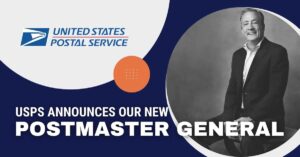The Meaning of Nixie or UAA Mail Codes
Table of Contents

Covered in a cryptic slew of codes with little to no information about how to proceed, few things are more frustrating than Undeliverable as Addressed, or UAA, mail. UAA mail has been a consistent problem for consumers, but an even larger issue among those businesses that rely on direct mail.
To combat this, many mailers look for resources, like PostalPro from USPS (formerly known as RIBBS® USPS), or expert data quality services, like NCOALink®, ACS™, and a dozen other processes to get ahead of bad addresses.
Today, it is easier than ever to determine the cause of returned or UAA mail – in many cases, UAA mail will be sent back to you with a Nixie or UAA code, which represents the various reasons a piece of mail might not arrive at the desired location. Knowing what each code means and how it might have occurred goes a long way towards decreasing or even eliminating UAA mail.
There are over 20 possible UAA codes that can be displayed on returned mail, and while some are self-explanatory, some are confusing and uncommon. Below, we’ll break down each UAA code, sharing what it means and how to fix it.
UAA Code: Not Deliverable as Addressed or Unable to Forward
Possibly one of the most common returns, this means that the addressee on the mailpiece has moved or the data does not match the address on the piece. For any number of reasons, this mailpiece cannot be forwarded. This should be represented by a return code of 23 or 27 from CASS or NCOALink.
UAA Code: Insufficient Address
This UAA code means something essential is missing. This could be a PO Box™ or street address without a number, a missing or nonexistent City, State, or ZIP Code™, missing route or other essential address information. To prevent this, avoid mailing addresses that receive a return code of 10-17 from CASS or NCOALink.
UAA Code: Attempted – Not Known
This means that the addressee on the mailpiece is not known and does not reside at the address in question. This is one of the hardest UAA codes to predict as neither NCOALink or CASS can guarantee that a specific addressee resides at a specific address. It can be determined if residents have moved from said address, but if they never actually lived there, no move will be found. The only way to work toward removing these errors is ensuring your data comes from reputable sources.
UAA Code: No Mail Receptacle
The address is lacking an official USPS acceptable mail receptacle. For example, some gated communities have a mail center rather than having a mailbox in front of each house. In this case, 123 Gate Street cannot be delivered as there is no mailbox – it instead would need to go to Box 123 Gate Mail Center. These are usually flagged by the USPS with a phantom route (CRRT of R777) or another more obvious problem return code.
UAA Code: No Such Number
The exact number listed on your mailpiece does not exist for this street. The most likely cause of this is bad data. The number is either outside the range of numbers for this street, in which case you would receive a Return Code of 21 from CASS, or the number may be within the street range, but the exact number listed does not exist.
UAA Code: Returned for Better Address
The address on your mailpiece is insufficient for delivery, and generally speaking, there is a better address for this addressee or location. This is indicated by having an Undesirable Return Code after CASS and NCOALink processing.
UAA Code: Illegible
The way the address appears on the mailpiece makes it unreadable to postal sorting machines and/or USPS staff. For this, it’s essential to look at the label design and printing, and work to produce a piece that can be accurately read.
UAA Code: Outside Delivery Limits
The Post Office™ that this mail was sent to for delivery does not cover this location. Your next step? Examine the presort tables and labeling lists to see if this job was sorted with ones that are no longer valid or are in their second month of being valid. The USPS updates this data every month, so it is possible that the Post Office that covers the address in question has changed. This may also be a case of an incorrect city – in some areas, though the residence is technically located in one town, its mailing address (and therefore Post Office) is different.
UAA Code: Returned for Postage
No postage present on mailpiece and no indication that there was postage. Using a printed indicia should resolve this as long as you don’t run into production issues preventing printing the indicia. The USPS should only send this back if there is also no indication that postage was affixed and then removed.
UAA Code: Moved, Left No Address
Addressee has moved but has not filed a Change of Address (COA) order. The USPS is aware the person does not live here but without information on where to send the mail and how to update the address, NCOALink processing, they will be unable to return a move/new address. For this issue, PCOA, the Proprietary Change of Address tool from Data Marketing Services, would be the best bet, as the addressee likely has updated their address with various businesses they frequent.
UAA Code: Temporarily Away
Addressee is not present, but still generally counts this as a residence. On top of that, any order for temporary forwarding or holding mail has expired. This may be reported as a temporary move by NCOALink depending on the exact situation.
UAA Code: Refused
Addressee refused the mail outright or refused to pay any additional postage due. You can combat this by ensuring sufficient postage is affixed to the mailpiece, but even that cannot prevent someone from accepting mail they do not want.
UAA Code: Vacant
No Person currently occupying this address. It should be flagged in the DPV® vacant field when returned from CASS and/or NCOALink.
UAA Code: Box Closed – No Order
The PO Box in question closed and no forwarding information was left., which could be due to non-payment. This should supply a Return Code of 26 from NCOALink.
UAA Code: Unclaimed
Mail was not removed from the receptacle in a timely fashion, prompting the carrier to pick it back up. This could be a matter of poor data quality, incorrect postal data, or something else specific to the addressee.
UAA Code: Deceased
This UAA code is straightforward, as the addressee is deceased. This type of undeliverable mail can be remedied by using BCC Software’s Suppression Services process to mark back deceased records and then remove those records from your lists.
UAA Code: Returned to Sender due to Addressee’s Violation
There are several variations of this, but in all cases, the addressee violated a postal order or rule, usually involving false representation. For this return, there is no mailer action that can be taken beyond removing the addressee from future mailings.
UAA Code: In Dispute
There is some disagreement among postal officials regarding the delivery of mail to this location. Usually, this means the local authority has some reason to not deliver that has not been completely confirmed and fully entered into the CASS system. This is not reflected in the CASS or NCOALink tables yet so there is no remedy besides ensuring your encoding data is up to date.
UAA Code: No Such Office in State
This means the Post Office that would service the mailpiece according to its sortation does not exist. The most likely cause of this UAA code is outdated labeling lists or labeling lists in their second month of validity when another set of labeling lists has already been released.
UAA Code: No Such Street
The street listed in this address does not exist. The Return Code would be 10 or 17 after CASS.
Now that you have more insight into what each UAA code means and how we might eliminate these problems, you can begin to achieve even better results from mailings. Please note that this list does not cover every possible Return Code or the reasons for them, but it covers the basics and helps point you in the right direction if you run in to return mail issues. If you have any questions, please reach out to our expert Customer Support team with any questions by calling 800.624.5234.
Don’t forget to download our NCOALink Return Code Quick Reference Guide!




